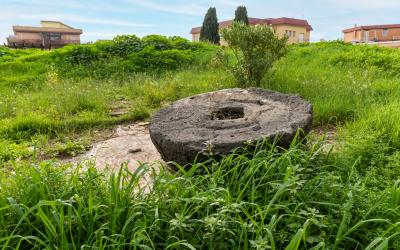A medieval watchtower bathed by the sea.
The stretch of coast north of Ladispoli was protected by this defensive tower that was used for this purpose until the beginning of the 19th century armed with cannons and bayonet rifles. During the last war it was seriously damaged by an explosion. Because of this event the upper part was completely destroyed.
The remains of the tower are visible on the seafront in an advanced state of deterioration. Thanks to the citizens' mobilization, ministerial funds have been allocated for future works of "Conservative restoration of the monumental complex of Torre Flavia". A small museum on the sea will also be created with multimedia paths that will allow the historical and cultural heritage of Ladispoli to be rediscovered. Originally the Tower had a relatively low sloping base delimited by a limestone ridge; above were two floors connected by a brick staircase and illuminated by small windows. The upper terrace had four bullet-proof coner turrets. Access to the Tower was on the upper floor and was achieved by means of flights of stairs: only later was an entrance door opened in the sloping area, aligned with the original one. The masonry included a cement core covered by a regular brick curtain reinforced at the coners with travertine limestone blocks.











